Crafting a photographic composition that goes beyond the subject is a topic that I teach regularly to my workshop attendees as well as practice in my own photography. It can sometimes be a challenging topic for some to wrap their heads around, so I’ll do my best to articulate this concept in this article as best as I can.
To me, photographing beyond the subject is a deeper way of looking at your subject and framing up your composition that hopefully unlocks more creativity and expressiveness in the photograph, thereby increasing its impact or appeal. It involves slowing down and really examining what you are photographing, and more importantly WHY you are photographing this particular subject. And, it’s all the other elements in the composition around the subject and how they interact with each other and with the main subject. It’s this “why” part that sometimes can challenge people. I often ask my folks “what are you shooting” and have a discussion about that. Then, I may ask “why are you shooting it” and have them describe what drew them to this particular subject and composition. Sometimes folks can articulate what drew them to the scene, what is of interest to them. Other times, they struggle to frame up “why” they are drawn to a scene. For me, the “why” is the essence of the shot; maybe it is the quality of light, a texture, pattern, shape or color. Perhaps it is environmental conditions adding a unique feeling to a scene. Having a clear understanding of the “why” will help you figure the best way to capture the image and better impart the feelings you are having and why you are drawn to the scene.
So, what does it mean to photograph beyond the subject? That almost doesn’t even make sense…we are photographing a subject, how do we go beyond? It involves your vision and thinking about more than just the subject itself and observing the other aspects of the scene. Most importantly, it’s paying attention to what attracted you to this particular scene and why you want to shoot it.
Another way to ask the question, I sometimes will ask folks, and myself, “ok you found a subject that you want to photograph, but, what is it about that subject that caught your eye and makes you want to create an image?” Yes, it’s a pretty subject, but what is it about the subject that interests you? Is it the way the light is falling on the subject? Is it the shape of the subject? Or perhaps the color? There usually is something “else” about the subject that catches your eye which inspired the photograph. If you can identify what that bit is, you can then work to create an image that accentuates what it is that caught your eye and bring it in to your photograph so the viewer feels the same “pull” to the subject that you did.
Let’s take a flower as an easy example. Yes, the main subject is a flower. If you were just shooting the subject, 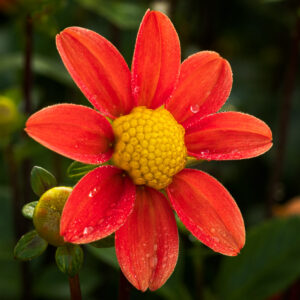 you might include the whole flower so it is a representative of the entire subject. But looking beyond the obvious subject, are there shapes, colors, flow, texture or anything else about the subject that could be a visual interest and create a more compelling image? Often times the center of a flower is of particular interest to me because there are some amazing shapes and patterns to be found there, so I build a composition that includes, or features, the center of the flower. Or, it’s the shape of the leaves that creates a sense of flow through the image, so I’ll position my camera in such a way to accentuate that flow. Yes, I am photographing a flower as the “main subject”, but I am really going beyond the subject and photographing a unique aspect about that subject that interests me.
you might include the whole flower so it is a representative of the entire subject. But looking beyond the obvious subject, are there shapes, colors, flow, texture or anything else about the subject that could be a visual interest and create a more compelling image? Often times the center of a flower is of particular interest to me because there are some amazing shapes and patterns to be found there, so I build a composition that includes, or features, the center of the flower. Or, it’s the shape of the leaves that creates a sense of flow through the image, so I’ll position my camera in such a way to accentuate that flow. Yes, I am photographing a flower as the “main subject”, but I am really going beyond the subject and photographing a unique aspect about that subject that interests me.
 In this image of an orange dahlia, the subject is a flower, but the magic is happening in the shapes of the petals and the water drops. I framed my composition to highlight those two features of the flower, creating a more compelling composition.
In this image of an orange dahlia, the subject is a flower, but the magic is happening in the shapes of the petals and the water drops. I framed my composition to highlight those two features of the flower, creating a more compelling composition.
Another flower example is with this tulip on the right.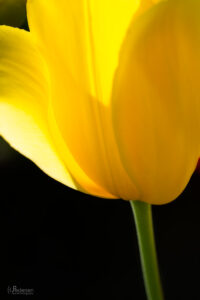 The flower and stem are the main subjects of the shot. However, it was the backlight coming through the petals that drew my attention. Once I identified that aspect, I spent considerable time positioning my camera to showcase the light and petals, while minimizing any background noise. There was a lot of consideration as to where the stem is oriented left to right in the frame and I chose a little past the third line to the right, which allowed the upper left petal to really shine with the sunlight.
The flower and stem are the main subjects of the shot. However, it was the backlight coming through the petals that drew my attention. Once I identified that aspect, I spent considerable time positioning my camera to showcase the light and petals, while minimizing any background noise. There was a lot of consideration as to where the stem is oriented left to right in the frame and I chose a little past the third line to the right, which allowed the upper left petal to really shine with the sunlight.
In a broader landscape setting, this is where you really need to look at “why” you are photographing a particular scene. It could be just a pretty picture that you want to take, but I often think it’s more than that. Something drew you to stop and consider photographing the scene. If you can identify that something, then you can work to accentuate or highlight that aspect in your pretty photograph.
 In this shot of Gorton Creek, at first glance it was just a “pretty picture” of a stream and forest, but when I really stopped to examine the scene, the vivid greens jumped out at me, which told me this is something I should accentuate by getting as much in as possible and then make sure to highlight in post. Then, the rocks in the stream, their shape and the way they are positioned spoke to me. Once I studied the scene a bit, I realized I could use these rocks as a slight leading line travelling upriver. I moved my tripod around until I felt I had a good angle on the rocks, AND, had a good balance of green color left and right.
In this shot of Gorton Creek, at first glance it was just a “pretty picture” of a stream and forest, but when I really stopped to examine the scene, the vivid greens jumped out at me, which told me this is something I should accentuate by getting as much in as possible and then make sure to highlight in post. Then, the rocks in the stream, their shape and the way they are positioned spoke to me. Once I studied the scene a bit, I realized I could use these rocks as a slight leading line travelling upriver. I moved my tripod around until I felt I had a good angle on the rocks, AND, had a good balance of green color left and right.
In a minimalist shot like this, the obvious subject is the truck on the hill. 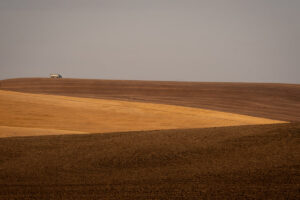 The “story” is one of farming at harvest time. The truck is a recognizable focal point for the viewer to identify with and lock on to. What was most important for me though was the shape of the hills and how they overlapped plus the tonal qualities of each hill and how those were balanced throughout the image. The shape of the landscape and how I captured it is more critical than the actual subject in making this image work. By slowing down and walking up and down the road, changing height of my tripod, I was able to get a balance of the landscape that pleased me, all while photographing the main subject of the truck.
The “story” is one of farming at harvest time. The truck is a recognizable focal point for the viewer to identify with and lock on to. What was most important for me though was the shape of the hills and how they overlapped plus the tonal qualities of each hill and how those were balanced throughout the image. The shape of the landscape and how I captured it is more critical than the actual subject in making this image work. By slowing down and walking up and down the road, changing height of my tripod, I was able to get a balance of the landscape that pleased me, all while photographing the main subject of the truck.
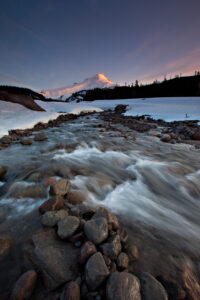 In this shot of Mt Hood during the Spring, the main subject(s) are the mountain and the rushing river. A fairly easy exposure and focus on the subjects and then I turned my attention beyond the subject. What I spent more of my time on though was the positioning of the rocks in the foreground. I wanted enough of the rocks visible so it felt like the viewer was on solid footing, not hovering over the stream. And, I wanted enough of the shape of the rock pile visible to mimic the shape of mountain, bringing some symmetry along the middle of the frame.
In this shot of Mt Hood during the Spring, the main subject(s) are the mountain and the rushing river. A fairly easy exposure and focus on the subjects and then I turned my attention beyond the subject. What I spent more of my time on though was the positioning of the rocks in the foreground. I wanted enough of the rocks visible so it felt like the viewer was on solid footing, not hovering over the stream. And, I wanted enough of the shape of the rock pile visible to mimic the shape of mountain, bringing some symmetry along the middle of the frame.
This photograph of a rainbow from Iceland, the obvious subject is the mountain and the rainbow. 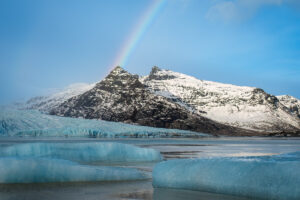 Again, another fairly easy shot. Looking beyond the subject though, what about the icebergs and water surrounding them? I spent considerable time framing up this relatively simple shot because I focused on where I wanted the icebergs to enter the frame from left and right. I also wanted to achieve as much separation between the icebergs and possible, to minimize overlap. Once I quickly zeroed in on shooting the mountain and rainbow, most of my creative compositional effort went in to those elements around the subject, in order to make the image as compelling as possible to the viewer.
Again, another fairly easy shot. Looking beyond the subject though, what about the icebergs and water surrounding them? I spent considerable time framing up this relatively simple shot because I focused on where I wanted the icebergs to enter the frame from left and right. I also wanted to achieve as much separation between the icebergs and possible, to minimize overlap. Once I quickly zeroed in on shooting the mountain and rainbow, most of my creative compositional effort went in to those elements around the subject, in order to make the image as compelling as possible to the viewer.
Sometimes the “subject” isn’t a thing, but a concept. Here it’s a bit harder to look beyond the subject, but it is still possible and something you should practice.
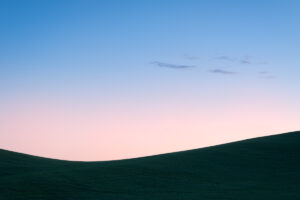 For this shot in the Palouse, I was drawn to the shape of the landscape, the curve of the ridgeline and how it dipped down. So, the “shape of the landscape” is the subject. Once I identified what it was that attracted me, then it was time to figure out how best to showcase this in my composition. I considered things such as “how tight should the shot be, how much curve do I want?”. “How much sky versus land” do I want in the image? “There are faint tire tracks in the wheat, do I eliminate them, accentuate them, or just let them be?” In the end, I shot this composition in a couple different ways and then selected the one that felt the best when I got home.
For this shot in the Palouse, I was drawn to the shape of the landscape, the curve of the ridgeline and how it dipped down. So, the “shape of the landscape” is the subject. Once I identified what it was that attracted me, then it was time to figure out how best to showcase this in my composition. I considered things such as “how tight should the shot be, how much curve do I want?”. “How much sky versus land” do I want in the image? “There are faint tire tracks in the wheat, do I eliminate them, accentuate them, or just let them be?” In the end, I shot this composition in a couple different ways and then selected the one that felt the best when I got home.
Similarly, also from the Palouse, is this shot which again doesn’t have an obvious subject. 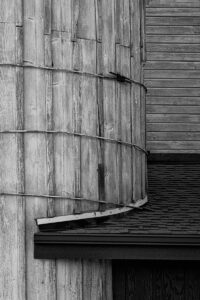 What attracted me to this scene is the mixture of different patterns and textures. I spent considerable time examining this before figuring out how to shoot it in a way that would highlight what attracted me.
What attracted me to this scene is the mixture of different patterns and textures. I spent considerable time examining this before figuring out how to shoot it in a way that would highlight what attracted me.
The decisions I had to make were how much of each pattern/texture to include in the scene, how do I want to position that metal arc along the shingled roof, would it be best in landscape or portrait mode, what was I going to do in Post, etc.
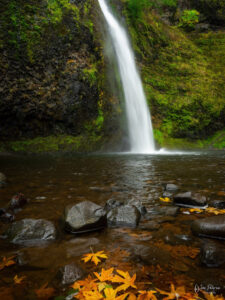 Here is Horsetail Falls in the Columbia River Gorge. Of course the waterfall is the subject and it was easy to set the camera to how I wanted to capture the moving water. Looking beyond the subject, what about the foreground and the sides around the waterfall? What about the color balance and tonal balance? Looking beyond the subject, the leaves in the foreground and the rocks were huge considerations in the composition. I wanted enough leaves to really give that Autumn feel and I had to work my positioning so I didn’t cut off too many rocks and that they felt balanced and supporting in the frame. Lastly, where to put the waterfall in the frame? For this shot, I chose to include a lot of the darker rock wall on the left and minimize the greens on the right to give a slightly mellower feel since I have so much going on with the movement of the water along with the vibrant orange leaves.
Here is Horsetail Falls in the Columbia River Gorge. Of course the waterfall is the subject and it was easy to set the camera to how I wanted to capture the moving water. Looking beyond the subject, what about the foreground and the sides around the waterfall? What about the color balance and tonal balance? Looking beyond the subject, the leaves in the foreground and the rocks were huge considerations in the composition. I wanted enough leaves to really give that Autumn feel and I had to work my positioning so I didn’t cut off too many rocks and that they felt balanced and supporting in the frame. Lastly, where to put the waterfall in the frame? For this shot, I chose to include a lot of the darker rock wall on the left and minimize the greens on the right to give a slightly mellower feel since I have so much going on with the movement of the water along with the vibrant orange leaves.
This barn in the Palouse out in a wheat field really isn’t that special compared to other barns in the area. 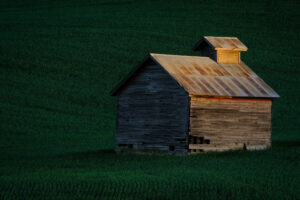 So, what attracted me to this shot? Looking beyond the subject, it was the light! The quality of light brushing the top of the barn was amazing, so much so that I had to stop my truck to photograph this. Yes, the barn is the subject, but it is the light that makes this shot special. I positioned myself to show as much of this lighting hitting the barn as possible, while still showing good angles of the barn. The light is beyond the subject and what makes this photograph memorable.
So, what attracted me to this shot? Looking beyond the subject, it was the light! The quality of light brushing the top of the barn was amazing, so much so that I had to stop my truck to photograph this. Yes, the barn is the subject, but it is the light that makes this shot special. I positioned myself to show as much of this lighting hitting the barn as possible, while still showing good angles of the barn. The light is beyond the subject and what makes this photograph memorable.
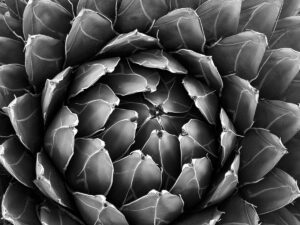 In composing this shot of a cactus, I wasn’t as mentally focused on a “cactus”, as I was on the repeating patterns of leaves and the white lines throughout the image. Other than working on the positioning of the center of the cactus, most of my energy was adjusting my position to accentuate the leaves and white lines in the frame to create this pleasing effect. I went beyond the subject of a cactus and instead worked with the concepts of lines and patterns.
In composing this shot of a cactus, I wasn’t as mentally focused on a “cactus”, as I was on the repeating patterns of leaves and the white lines throughout the image. Other than working on the positioning of the center of the cactus, most of my energy was adjusting my position to accentuate the leaves and white lines in the frame to create this pleasing effect. I went beyond the subject of a cactus and instead worked with the concepts of lines and patterns.
In this shot of an old truck, yes, the truck is the subject,  but for me the most important element in the shot is the rust. I wanted to frame my composition to accentuate the rust, give it as much room in the frame as possible, while still including enough of the other parts of the truck (subject) so people would know what they were looking at. The rust element is beyond the subject (truck).
but for me the most important element in the shot is the rust. I wanted to frame my composition to accentuate the rust, give it as much room in the frame as possible, while still including enough of the other parts of the truck (subject) so people would know what they were looking at. The rust element is beyond the subject (truck).
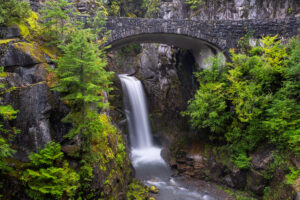
Christine Falls in Mt Rainier National Park is an often-photographed iconic view. The subject of course is the waterfall, yet its all of the other elements that make or break a successful shot here. You should consider how much of the foliage to include on each side of the falls, not cutting off any trees. How much of the stream is included has an impact on the “feel” of the image. Most people don’t pay attention to the bridge above the falls and it’s very easy to not have this level, a subtle but impactful little detail. All of these details are beyond the actual subject of the waterfall!
Besides making sure your main subject is properly exposed, in focus and framed well, I encourage you to take that next creative step in your composition by looking beyond the subject, paying attention to all of the other elements and aspects in your photograph.
- Identify what is drawing you to the scene. Work to identify what that is, the “why” you are taking the shot. It could be an an attribute of your actual subject, or, it could be an aspect in the scene beyond the subject that is catching your attention, such as light, texture, pattern or color.
- Compose your image to accentuate the aspects of the “why”, all while making sure your subject is properly handled.
- Evaluate aspects of the scene that are beyond the subject, such as tonal balance, color balance, visual weight, etc.
- How are all of the elements positioned in the frame? Are they pleasing and complimentary to the subject, or do they feel “off” or crowded or overlapping?
Once I’ve honed in on a potential photograph of a subject, I honestly spend more time focusing on the areas in the scene other than the actual subject. I am looking beyond the subject as I compose at all of the other elements and tonalities in the composition. It is these other elements and ideas around the subject that can turn a good photograph in to a great photograph!


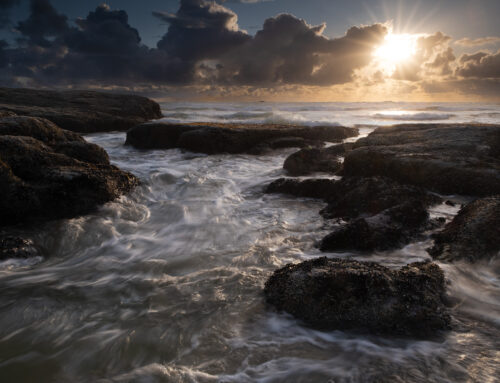
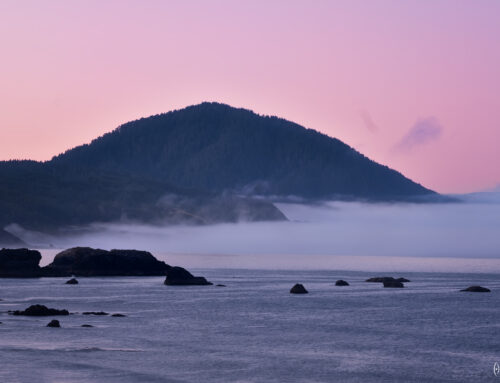
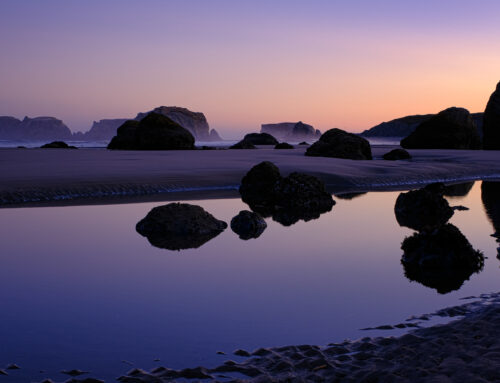
Excellent article. I’ve been trying to get myself to slow down and focus more on all the aspects of the photo I’m taking, instead of just reacting to a lovely shot and snapping the shutter. This article helps to detail the thought process I should be engaging in as I compose my photos.
Thanks for the comment Rick! I’m glad it served as a little reminder for you. It’s something I still have to work on with myself as its so easy to get caught up in the moment and not slow down. Keep on shooting!